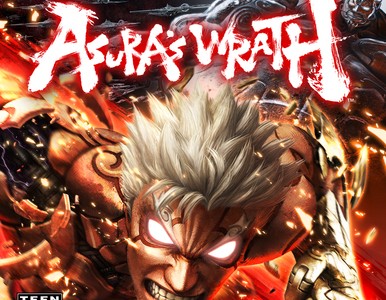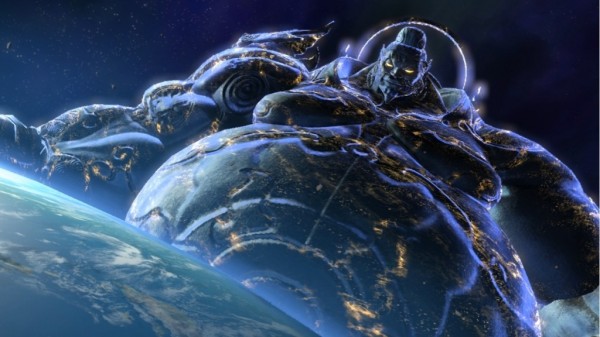The first thought that came to mind after the opening cutscene of Asura’s Wrath was my affinity for “Dragon Ball Z” as a child. I’d glue myself to the television in the hopes of seeing epic battles and colossal explosions – characterization and plot development were of no importance to me. My preferences have changed since then and I’m no longer bound by the short attention span of my youth. Yet somehow Asura’s Wrath managed to transport me back to that childhood where saving the world and annihilating maniacal villains presented the most pressing matters of life.
Fond memories only tell part of the story. Asura’s Wrath also provides a new perspective in which I abandon the role of ‘outsider looking into a television’. I am the titular demi-god seeking revenge on treacherous deities. With the simple press of a button I shatter planet-sized rocks, climb endless towers, and experience rebirth. After years of seeing god-like warriors in action on a brightly lit screen, the sense of control and empowerment is liberating.
That release from the limits of television and film is a product of the game’s experiment with interactive media. By all accounts Asura’s Wrath can be seen as an anime/video game hybrid, complete with episodic credits and recaps. Taking a page out of Hideo Kojima’s book, Capcom and developer CyberConnect2 display an immaculate attention to detail, focusing on careful camera angles and rousing cutscenes that conjure up images of a virtual director’s chair. By doing so the game is able to suck me into its unique world while appealing to my 8-year old self with plenty of over-the-top and explosive moments.
Speaking of over-the-top moments… wow. This game’s willingness to push the boundaries of insanity still boggles my mind. The bosses in Shadow of the Colossus were admittedly huge, but Asura’s Wrath contains adversaries larger than entire planets. I took one enemy out by essentially destroying his finger. And, by the end of the battle, I had a huge grin on my face. Once again I was transported back in time and each new ridiculous moment had me that much more invested in Asura’s tale of revenge.
When I actually play Asura’s Wrath instead of taking in the jaw-dropping spectacle of it all, the game’s flaws became readily apparent. The quick time events are condensed to three buttons a majority of the time – including a lot of dodging with the left analog stick – while the third-person battles boil down to the obligatory light, hard, and ranged attacks. Shoot ’em up sections also make an appearance, but locking on to targets proves far too easy. A bare bones approach defines all of these interactive moments, but ultimately they serve to highlight the game’s impressive cinematic scope. Hitting the triangle button might not be fun, but hitting it and then destroying an airship with Asura’s fists makes all the difference.
Immersion is, however, inconsistent in Asura’s Wrath. Simple quick time events perfectly emulate the feeling of being a demi-god, brushing past lowly foes with absolute ease. But then brief action sequences are thrown the player’s way, standing in opposition with QTEs. Why should I have to button mash my way through 10-20 enemies when I took out just as many moments ago with a few button prompts? Perhaps CyberConnect2 was afraid that a game with only QTEs would be off-putting to some, but that inconsistency hinders the Asura’s Wrath experience.
Asura’s Wrath comes across as a love/hate game. There are likely detractors who will look down on the limited amount of complexity and abundance of brevity, but my experience with it reminded me that sometimes video games just need to be crazy and fun. Obviously innovative, emotional, and culturally relevant games help push the medium forward, but even a viewpoint from years past and a remembrance of one’s childhood can be just as valid.




















